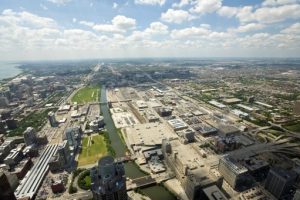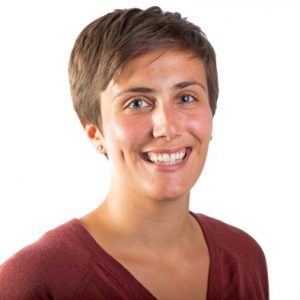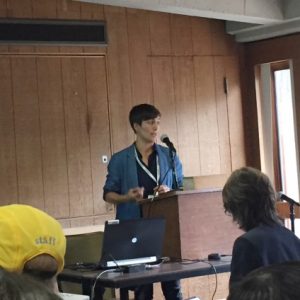Looking Beyond “Utility of the Future” to “Place-Based Power”
 Our mission at Elevate is to promote smarter energy use for all, and in order to do this, we need to know the current needs of populations that face barriers to energy resources. We’re constantly working to understand the energy burden on low-income families and how we can create sustainable solutions that alleviate this burden.
Our mission at Elevate is to promote smarter energy use for all, and in order to do this, we need to know the current needs of populations that face barriers to energy resources. We’re constantly working to understand the energy burden on low-income families and how we can create sustainable solutions that alleviate this burden.
Increasing numbers of households in the United States are low-income. The U.S. Department of Housing and Urban Development (HUD) defines low income as 80 percent of the Area Median Income (AMI), which is set for each major rental market. In 2014, 58 percent of the more than 1 million Chicago households were considered low-income.
 These communities are underserved by residential energy efficiency programs and face barriers to distributed generation and innovative rate design. Low-income customers stand to benefit the most from these particular resources because they tend to live in more energy intensive homes and spend a higher proportion of their income on utilities. Low-income families also usually live clustered in communities, many of which suffer from disinvestment across the housing, transportation, and community development sectors.
These communities are underserved by residential energy efficiency programs and face barriers to distributed generation and innovative rate design. Low-income customers stand to benefit the most from these particular resources because they tend to live in more energy intensive homes and spend a higher proportion of their income on utilities. Low-income families also usually live clustered in communities, many of which suffer from disinvestment across the housing, transportation, and community development sectors.
 As the energy landscape shifts, the “utility of the future”—changes currently underway or anticipated in the industry, including advanced metering, rate design, and distributed generation—must have a community-based approach. Elevate Senior Research Analyst Margaret Garascia led a study of the barriers low-income households face to existing utility approaches to energy efficiency and renewable energy. The paper then shows how utilities, cities, and nonprofits can work together to connect low-income households to resources while meeting city-level climate goals and breaking down utility program silos.
As the energy landscape shifts, the “utility of the future”—changes currently underway or anticipated in the industry, including advanced metering, rate design, and distributed generation—must have a community-based approach. Elevate Senior Research Analyst Margaret Garascia led a study of the barriers low-income households face to existing utility approaches to energy efficiency and renewable energy. The paper then shows how utilities, cities, and nonprofits can work together to connect low-income households to resources while meeting city-level climate goals and breaking down utility program silos.
This model ensures that the benefits promised by the utility of the future, including increased generation from renewable energy and jobs in the clean energy sector, reach those who need them most. “We’re trying to craft Elevate’s vision for the future broadly about how to engage low-income communities in an impactful way,” said Margaret. “As we transition to a cleaner energy economy, we want to make sure these communities aren’t left behind. This paper recommends solutions and shows examples of the work being done to make this happen.”
One proposed recommendation is, because many of the problems facing low-income communities are interrelated, utilities and cities should work across disparate funding streams to create interrelated solutions. In the Chicago neighborhood of Bronzeville, Elevate is working with ComEd to pilot the new approach described throughout the paper. The Department of Energy provided funds to build a microgrid—a small power grid that can connect or disconnect from the main grid to keep locally generated power flowing—and ComEd made the conscious decision to heavily involve the community in the process. Elevate was selected to help engage Bronzeville residents, businesses, and local leaders to facilitate constructive conversations, gather input, and ultimately create a sustainable solution with community support.
“Elevate is uniquely positioned as a trusted utility partner but also an organization that works in communities on energy issues,” said Margaret. “If we don’t advocate for and make space for communities to advocate for themselves, then the benefits of energy efficiency, local power generation, and clean jobs won’t reach all communities evenly.”
 On August 22nd, Margaret presented her research at the 2016 American Council for an Energy-Efficient Economy’s Summer Study on Energy Efficiency in Buildings in Pacific Grove, California. Margaret spoke to a standing room only crowd on the “Resilient, Sustainable Communities” panel. “On the community resiliency track, it was held in a much smaller room than other panels. Every single day of the week-long conference, the room was overflowing. This sub-sector of the industry has a lot of interest in figuring out how to best serve these populations.”
On August 22nd, Margaret presented her research at the 2016 American Council for an Energy-Efficient Economy’s Summer Study on Energy Efficiency in Buildings in Pacific Grove, California. Margaret spoke to a standing room only crowd on the “Resilient, Sustainable Communities” panel. “On the community resiliency track, it was held in a much smaller room than other panels. Every single day of the week-long conference, the room was overflowing. This sub-sector of the industry has a lot of interest in figuring out how to best serve these populations.”
“Change is happening. There’s such a huge opportunity here, and if utilities, cities, and community partners work together, low-income communities will be more energy efficient, less reliant on aging infrastructure, and more resilient in the future.”
Read the paper Margaret presented, “From “Utility of the Future” to “Place-Based Power.””



